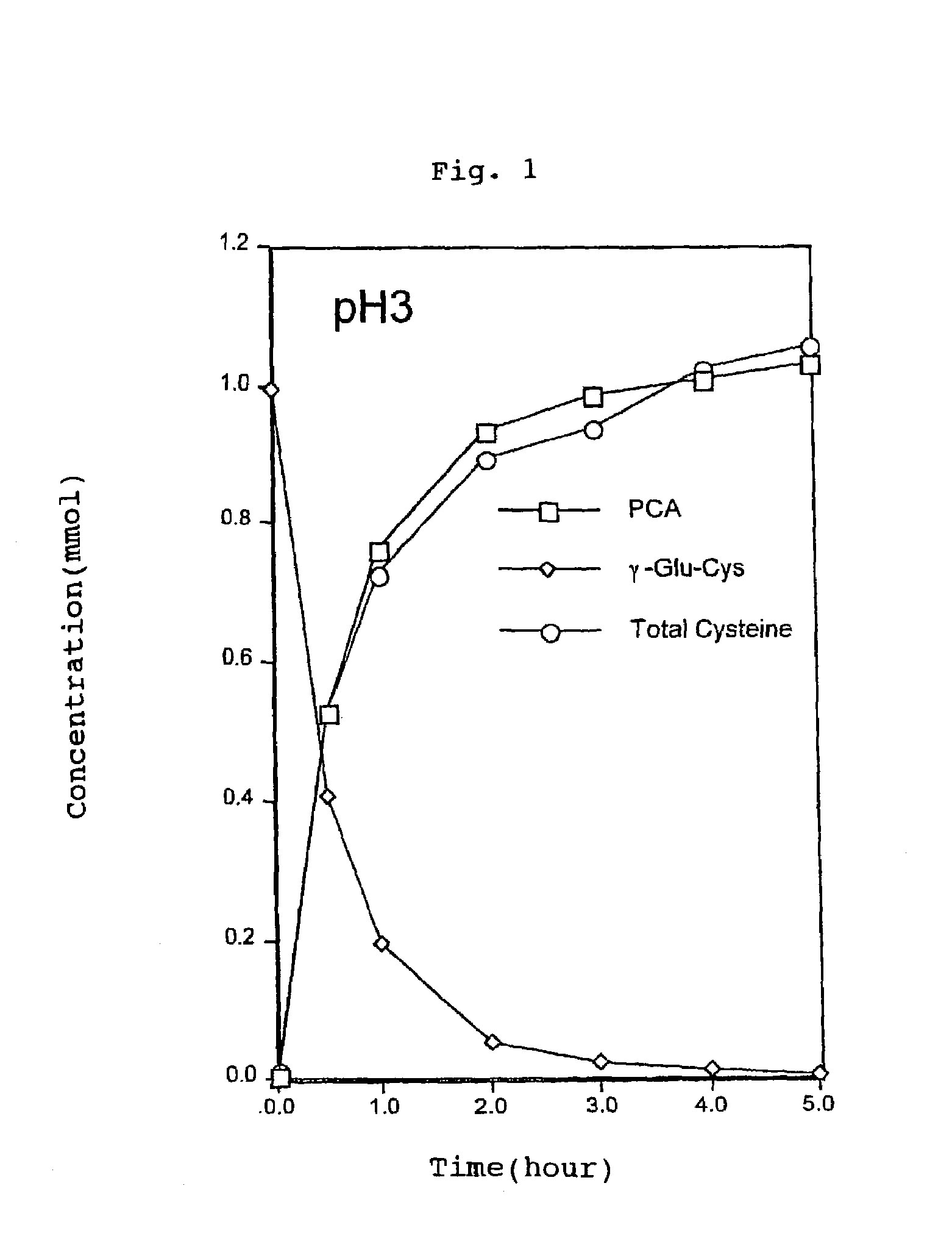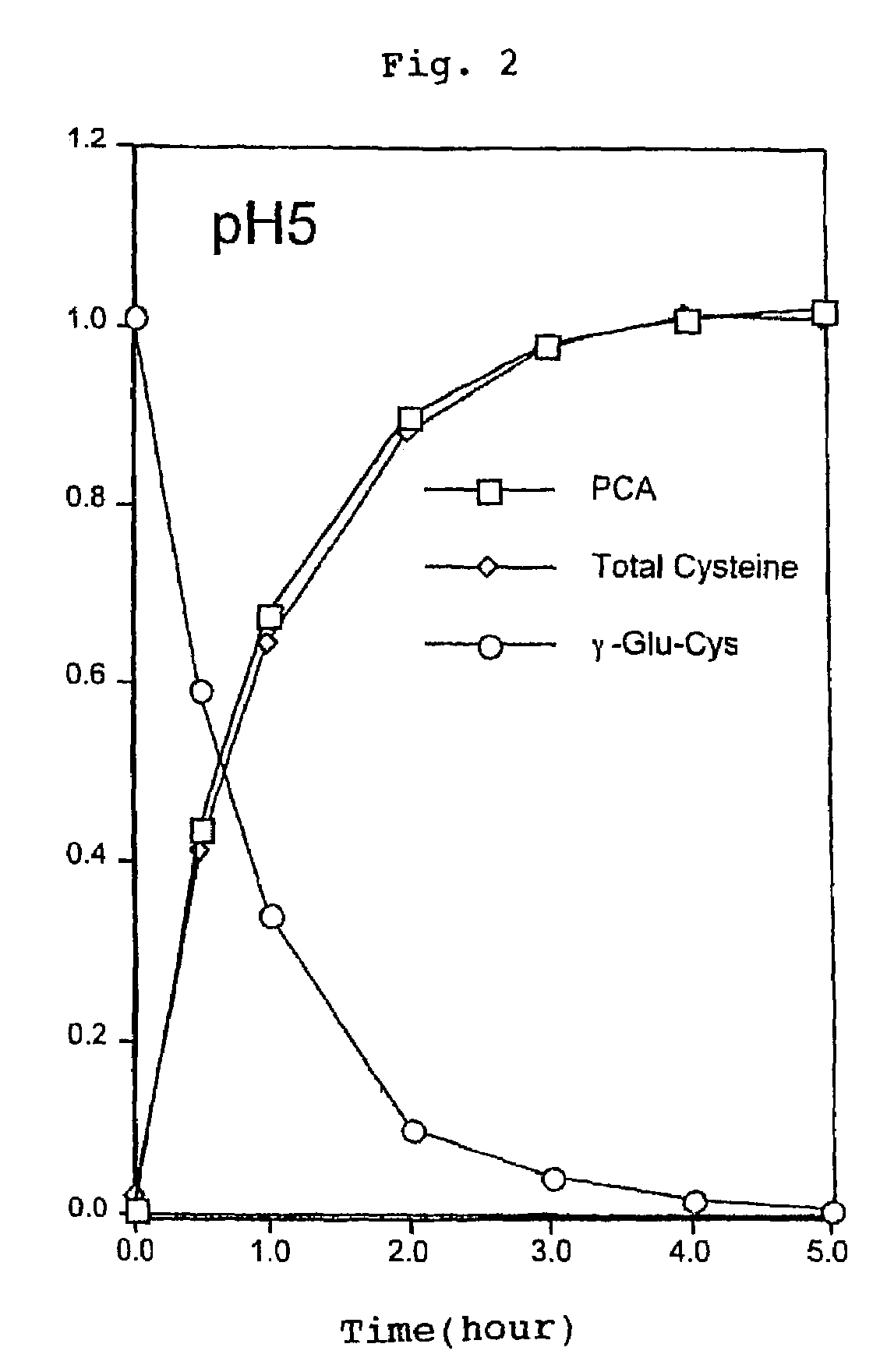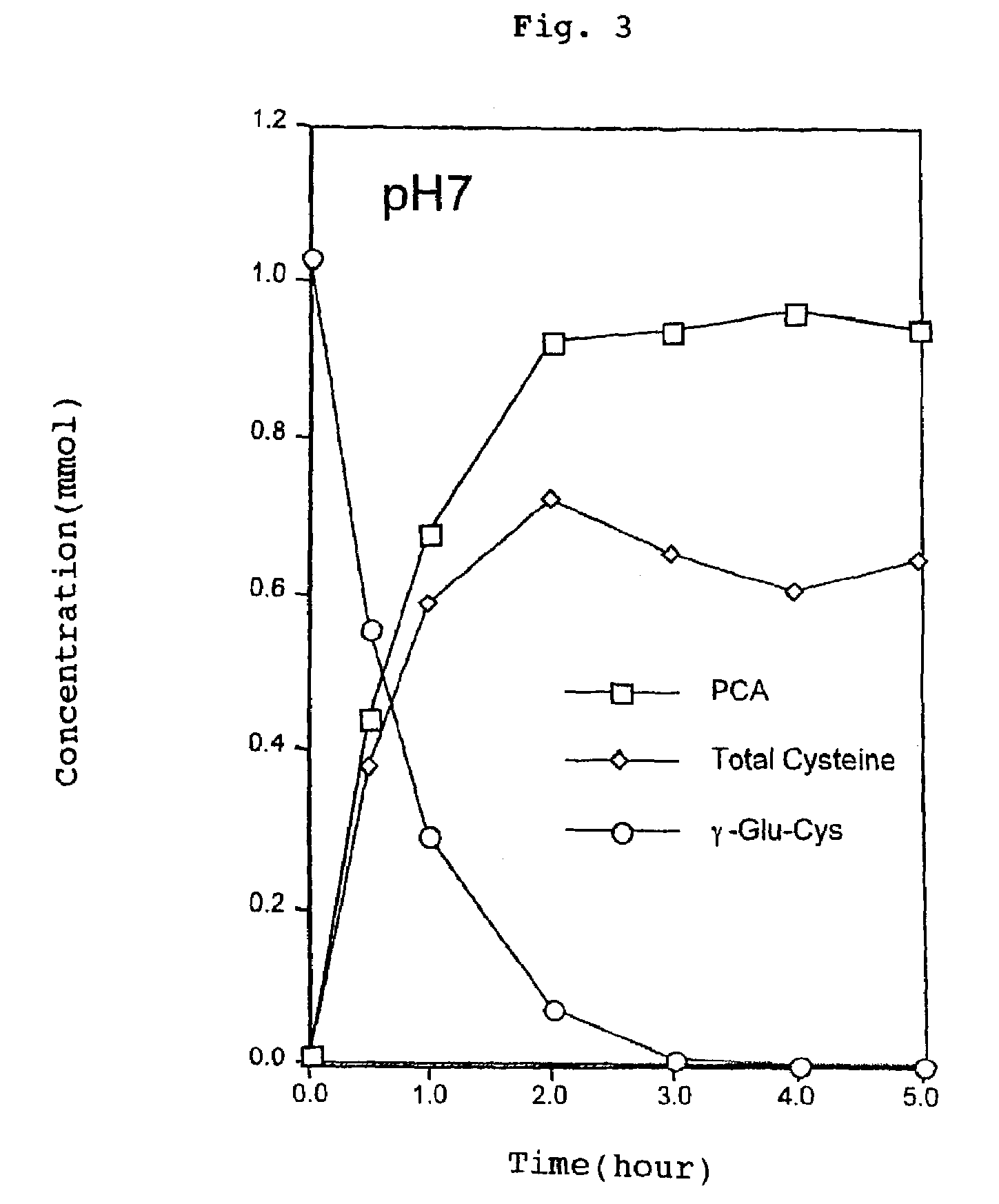Process for producing a flavor-enhancing material for foods
a technology of flavor-enhancing materials and process, which is applied in the field of easy-to-obtain cysteinerich food materials, can solve the problems of intensifying burnt smells, and achieve the effect of low cost and applicability
- Summary
- Abstract
- Description
- Claims
- Application Information
AI Technical Summary
Benefits of technology
Problems solved by technology
Method used
Image
Examples
example 1
[0070]Water was added to a yeast extract powder containing 4.5% γ-glutamylcysteine. The mixture was then adjusted to pH 5 with hydrochloric acid to prepare an aqueous 2% solution, which was heated at 98° C. for 180 minutes and then lyophilized whereby a yeast extract powder containing 2.0% cysteine was obtained.
[0071]Incidentally, when this yeast extract powder was used in producing a seasoning, a seasoning having good roast meat flavors was obtained.
example 2
[0072]Water was added to a yeast extract powder containing 4.5% γ-glutamylcysteine. The mixture was then adjusted to pH 7 with an aqueous 1 N NaOH to prepare an aqueous 2% solution. To the solution was added glutaminase (the same as in Test Example 2) in such amount that the concentration was 1 mg / ml in the solution, then the resultant mixture was incubated at 37° C. for 10 minutes and lyophilized, whereby a yeast extract powder containing 2.5% cysteine was obtained.
[0073]Incidentally, when this yeast extract powder was used in producing a seasoning, a seasoning having good roast meat flavors, similar to that of Example 1, was obtained.
[0074]Next, Examples and Test Example of the second embodiment of the present invention will be given.
example 3
γ-glutamylcysteine
[0075]An aqueous solution containing 4% γ-glutamylcysteine and adjusted to pH 5 with aqueous 1 N NaOH, was heated at 98° C. for 3 hours. After heating, to this solution was added glucose in an amount of 4% based on the solution (i.e., 1.4 moles per 1 mole of the γ-glutamylcysteine) (to give an inventive flavor-enhancing material for foods). This material was heated at 60° C. for 180 minutes and then lyophilized (to give an inventive flavor-enhancing agent for foods).
[0076]With respect to the lyophilized product (a flavor-enhancing agent for foods of the present invention) thus obtained, an organoleptic examination was carried out, using a system of a commercial beef consommé. In greater detail, this lyophilized product was added to the commercial beef consommé in an amount of 0.05% based on the solid content thereof, while the commercial beef consommé free of this product was used as the control. And which one was preferable or stronger out of the two soups concern...
PUM
 Login to View More
Login to View More Abstract
Description
Claims
Application Information
 Login to View More
Login to View More - R&D
- Intellectual Property
- Life Sciences
- Materials
- Tech Scout
- Unparalleled Data Quality
- Higher Quality Content
- 60% Fewer Hallucinations
Browse by: Latest US Patents, China's latest patents, Technical Efficacy Thesaurus, Application Domain, Technology Topic, Popular Technical Reports.
© 2025 PatSnap. All rights reserved.Legal|Privacy policy|Modern Slavery Act Transparency Statement|Sitemap|About US| Contact US: help@patsnap.com



